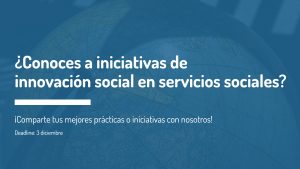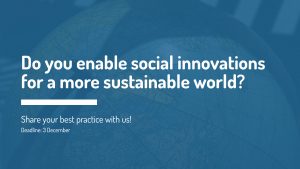Best practices show key components in supporting social innovation
To showcase success factors and avoid pitfalls for long-term societal change, 35 best practices on methods, tools and approaches from organisations on supporting social innovation processes have been collected in France, Latvia, Spain and Sweden.
Europe face several complex societal challenges, for example social exclusion and segregation. Social innovation is by many policymakers and others considered a useful approach when tackling complex societal challenges and working for a sustainable society. How do we make it happen and how can we best support social innovation processes? How do we identify and innovate solutions to societal challenges with many perspectives and partners? And how do we make them last?
The European consortia and project Building Capacity for a Sustainable Society (BuiCaSuS) aims at finding answers to these questions. One way of doing this is by presenting methods, tools and approaches, from organisations but also on societal level, on supporting social innovation processes.
35 best practices have been collected to showcase success factors and avoid pitfalls for long-term societal change: 14 from France, 4 from Latvia, 7 from Spain, and 10 from Sweden.
The analysis of the best practices provides an overview of key components in the support to social innovation as well as key learnings of how to support the overall social innovation processes, says Anna Tengqvist, coordinator for Forum for Social Innovation Sweden and part of BuiCaSuS.
The social innovation process consists of the elements: 1) identification and analysis of societal challenges, 2) mobilisation of actors and resources, 3) idea generation – design, testing and adaptation of solutions, 4 realisation – implementation, scaling up, out or deep and 5) creating societal change and value.
Methods, tools and approaches on how to support these elements vary, but often share traits such as cross sectoral cooperation and community involvement.
Here are examples of support for each element in the social innovation process:
1) Identification and analysis of societal challenges
- Gather knowledge and create analysis on societal challenges and needs
- Expand norms mobilisation of actors and resources
2) Mobilising, coordinating and connecting actors and stakeholders
- Community involvement
- Mobilising resources
3) Idea generation – design, testing and adaptation of solutions
- Gather stakeholders
- Challenging silos and structures
Incubations programs
4) Realisation – implementation, scaling up, out or deep
- Strengthening the ecosystem
- Identifying and involving key stakeholders
- Facilitating exchange of best practices
- Strengthening social innovation in policies
- Acceleration programs: Supporting scaling of social innovations
- Designing funding to support scaling of social innovations
- Providing methods and knowledge to innovation/business promoters to better support social
- innovations
5) Creating societal change and value
- Tools for impact assessment
- Supporting the evaluation processes
- Resource centers on social impact assessment
- Competitions, awards
- Tools to validate potential to scale
More information about the best practices can be found in the links below.
14 best practices France (486 KB)
- Cap Impact
- Social impact bonds
- 27ème région
- La Communauté Emergence & Accélération
- Banque des Territoires
- Local Support Scheme (Dispositif Local d’Accompagnement)
- FAIR
- I Fund (Fonds I)
- Initiative Factory (Fabrique à Initiatives)
- Godin Institute (Institut Godin)
- P’INS (Le programme P’INS)
- LabCom Destins
- Regional Economic Cooperation Hubs (PTCE – Pôles Territoriaux de Coopération Economique)
- Ronalpia (“Implantation” scale-up programme)
4 best practices Latvia (240KB)
- Social Entrepreneurship Association of Latvia (SEAL)
- Social Innovation Center
- Society Integration Foundation (SIF)
- Reach for Change Latvia
7 best practices Spain (543KB)
- Fundación Bofill – Hub Social
- The Spanish Red Cross – IDEATECA Participatory Innovation Platform
- Agirre Lehendakaria Center-ALC (Basque Social Innovation Lab)
- Fundación Novaterra – “La Promotora”
- Innovation in Social Care – iSocial Foundation
- RED Social Innovation
- Fundación Caja Navarra – Innova Programme (InnovaSocial and InnovaCultura)
10 best practices Sweden (320KB)
- Coordination of support organisations in a national network – Social Entrepreneurship Sweden
- Financing and financial coaching for social enterprises – Mikrofonden Sverige
- Supporting Social Innovation on regional level – Örebro Partnership for Social Innovation
- Collaboration and knowledge exchange for strengthened social innovation through cross-sectoral meeting places – Forum for Social Innovation Sweden
- Supporting social innovation through the business innovation system – The Joint Way
- Umeå’s innovation platform for sustainable cities – Social Progress Innovation Sweden
- Funding of social innovation – Vinnova, Sweden’s innovation agency
- Universities connecting to strengthen social innovation – Forum for Social Innovation Sweden
- Sweden’s Municipalities and Regions’ (SKR) Development Network Social Enterprises
- Promoting cooperative entrepreneurship – Coompanion Sweden







